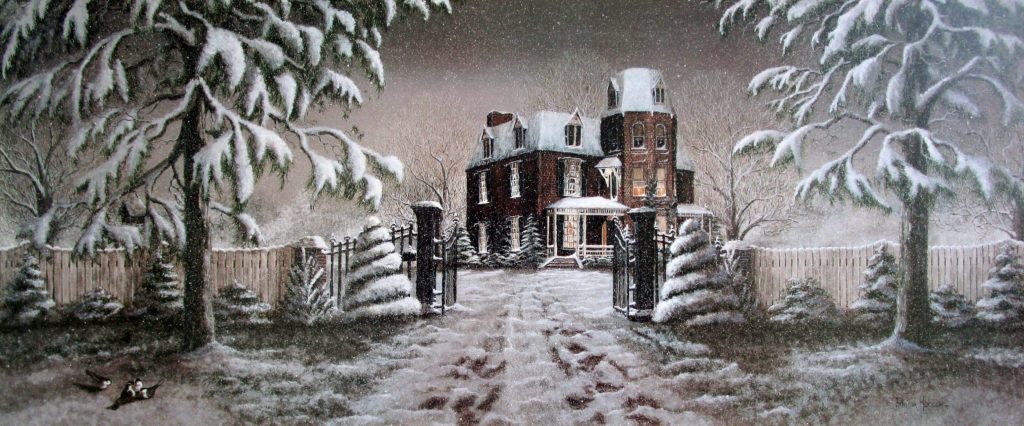“A Winter’s Gift”

This print frames to approximately: 37″ X 25″
Price: $100.00
About this Winter Print “A Winter’s Gift”
This winter print features the beautiful Tate house in Morganton, North Carolina also known as “The Cedars.” The Mansion is depicted in “A Winter’s Gift” in the simple beauty of the season’s first light snow. A flock of snowbirds have gathered under the snow-laden boughs of a tree, in the stillness of a dusky evening to feed on the last few seeds left behind, inspiring one to pause and reflect on the peace and beauty of the season.
From the first time I ever saw this beautiful mansion one spring day, I was inspired to paint it and had talked to a friend who lived in the area about it. After the first snow the following winter had fallen, my friend decided to get pictures of it in the snow for me. He could only get to within one half mile of the house in his car. Not to be outdone, he walked the rest of the way. I was so surprised when he showed up at my studio one day and gave me the pictures. Now, that is a loyal friend and fan of my artwork. I painted the house just as it appeared in the pictures. Yes, those bushes were actually manicured in the way that made them look like ice cream cones with the snow on them.
The “The Cedars”occupies most of an entire city block, surrounded by park-like wooded grounds. This cleverly ambitious adoption of a Greek Revival style home was built in 1850 by a Morganton physician, Dr. William McRee. Unfortunately, the doctor passed away five years later. The property was then purchased by Samuel McDowell Tate, at age 25. He bought the property in anticipation of his marriage to Jennie Sophronia Pearson. With the outbreak of the American Civil War the marriage was postponed to 1866. In 1868 Samuel remodeled the home removing the original pediment ed gable roof and replacing it with a mansard roof turning it into the “Second Empire” style home that we see today.
This mansion stands as a monumental tribute to the late Samuel Tate who was a Civil War hero who later went on to excel financially and politically in the state of North Carolina. After the war, he became involved with the Western North Carolina Railroad which was building a line from Salisbury, NC to Asheville, NC with a stop in Morganton.